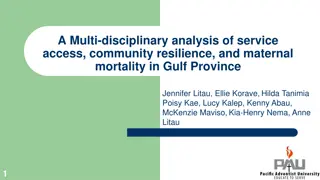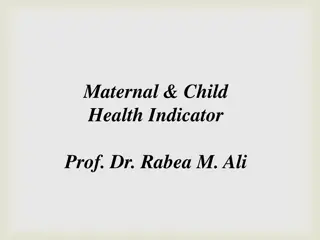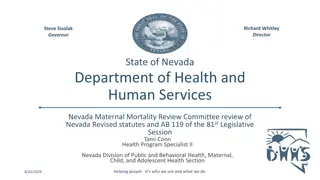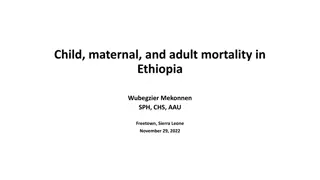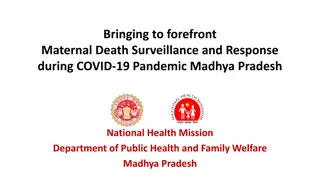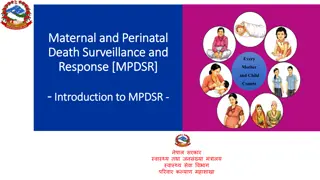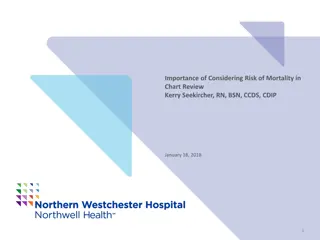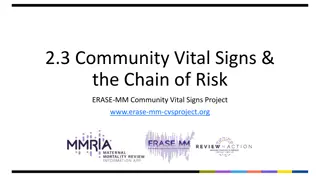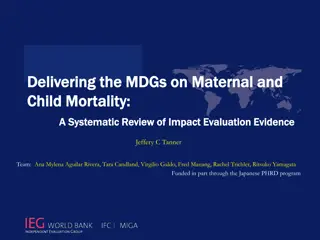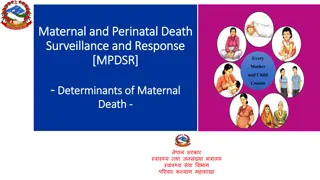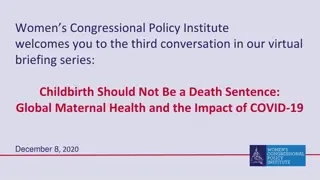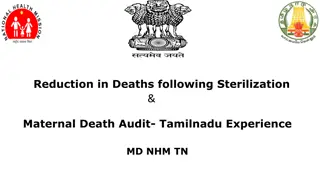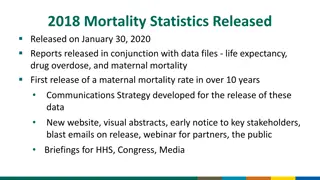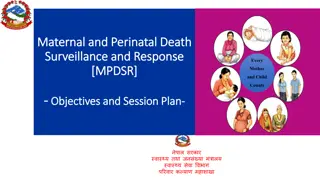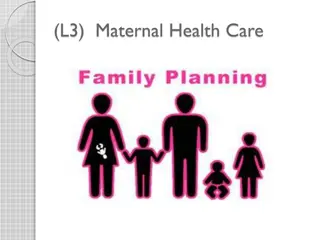Maternal Mortality Review Committee Decisions Form Overview
This article provides an in-depth look at the Maternal Mortality Review Committee Decisions Form, highlighting its purpose, data collection process, and key considerations. It emphasizes the importance of accurate documentation and analysis in maternal mortality cases, guiding committees on how to categorize deaths and review relevant information effectively.
Download Presentation

Please find below an Image/Link to download the presentation.
The content on the website is provided AS IS for your information and personal use only. It may not be sold, licensed, or shared on other websites without obtaining consent from the author. Download presentation by click this link. If you encounter any issues during the download, it is possible that the publisher has removed the file from their server.
E N D
Presentation Transcript
Maternal Mortality Review Committee Decisions Form A Closer Look
The Maternal Mortality Review Committee Decisions Form* was created to collect and organize data from maternal mortality review committees in a standardized way in order to analyze, report, and share it. 2
You may want to have several assigned note takers to ensure that you capture everything that s discussed. 3
After the form is completed, an abstractor or another assigned staff member should enter the information into the Maternal Mortality Review Information Application (MMRIA). 4
Your committee may choose to complete the questions on the form in any order. 5
The first field asks you to determine whether a woman s death was pregnancy-related or pregnancy-associated, but not -related. 6
You should ask yourself, if she had not been pregnant, would she have died? 7
If you arent able to answer this question even after reviewing all of the information available, you should label the case as unable to determine if pregnancy-related or pregnancy-associated, but not -related. 8
In rare cases, you may realize that a case was actually a false positive, one in which the woman had not in fact been pregnant within one year of her death. 9
The next step is to indicate the degree of relevant information that was available for review. As a committee, you also need to indicate whether or not you agree with the underlying cause of death listed on the death certificate. 10
Detailed cause of death information can be documented in this grid, which can be used to Peripartum Cardiomyopathy document causes of death that are both pregnancy- related and pregnancy- associated, but not -related. 11
The PMSS-MM is a standard way of documenting underlying cause of death among pregnancy-related deaths. To identify the underlying cause of death for pregnancy-related deaths, refer to the PMSS-MM list on page 3 of the form. This field only needs to be completed for deaths that are deemed pregnancy-related. 12
This section provides helpful information about specific contributors to the death. You are charged with indicating whether these conditions actually contributed to the death and NOT whether or not they were present. 13
These two questions help committees develop actionable recommendations and prioritize causes of death to focus on for action. 14
Some committees choose to answer only one question or the other. Each has its value. 15
The first decision says nothing about the degree of preventability. 16
The second decision speaks to the specific degree to which the death was potentially preventable. 17
Either decision is useful alone, but when used together, can better support prioritizing areas for the committee to recommend action. 18
The definition of preventability is provided on the form to help ensure that committee members are using consistent terminology. 19
Contributing factors form the basis for your committee s recommendations. MMRIA includes three elements to identify critical factors. 20
First, categorize each factor into one of five levels: Patient/Family, Provider, Facility, System of Care, or Community. 21
Second, assign each factor a class among 24 specific factor class categories, along with other. A description of each contributing factor class category is listed on page 4 of the form. 22
Third, provide a concise description of the contributing factor. 23
Recommendations should be specific, feasible, and actionable. Note who should be responsible for each action. 24
Recommendations should be specific, feasible, and actionable. Note who should be responsible for each action. 25
The level of prevention and level of impact fields help you prioritize among your recommendations for action. Preventability helps to prioritize among the underlying causes of death. When used together, they can help a committee identify focused areas for action. 26
In order to save time, some committees may choose to have a smaller group determine the levels of prevention and levels of impact for each recommendation after the meeting. 27
MMRIA.org www.ReviewtoAction.org


